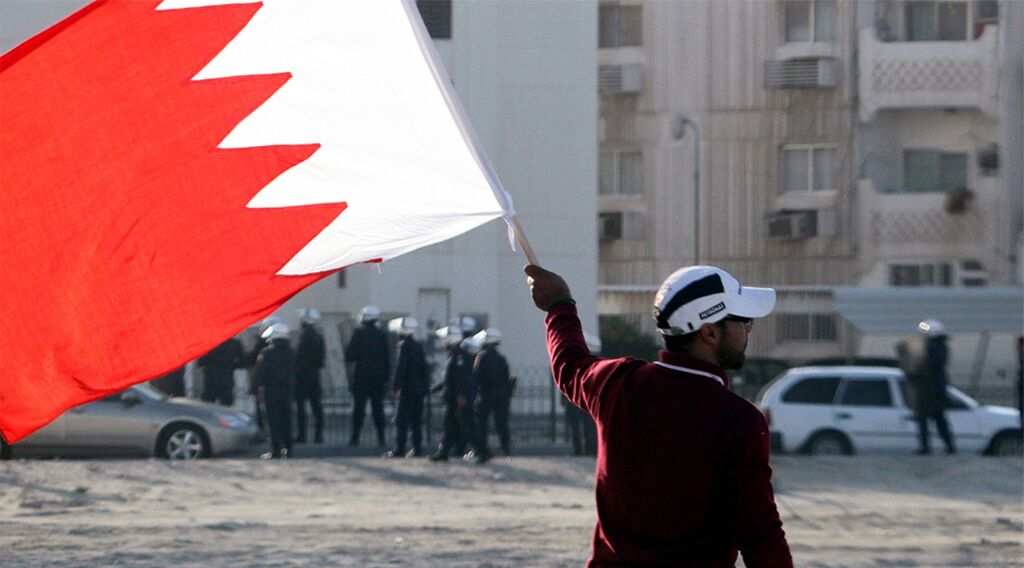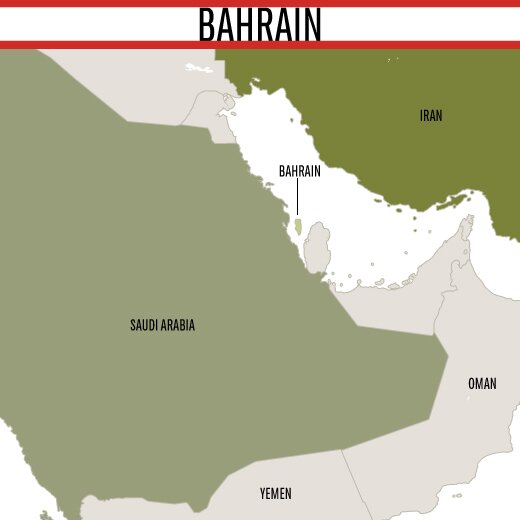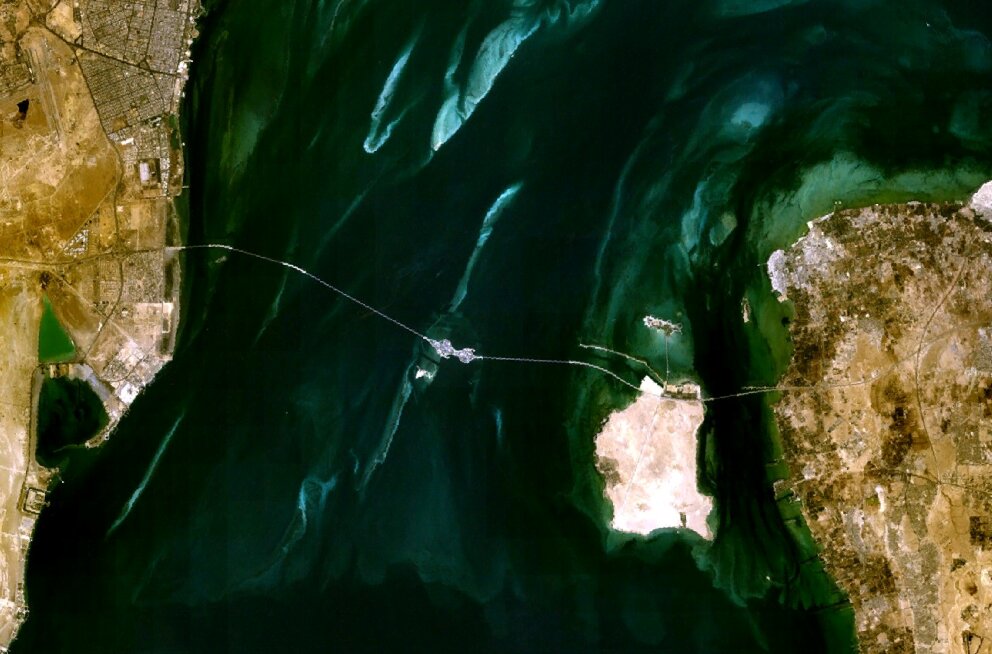
United States Withdrawal Threatens Bahrain
JERUSALEM—Located 16 miles off the east coast of Saudi Arabia, Bahrain has been allied with that country for years. Although the ruling Khalifa family takes its orders from Iran’s rival in Riyadh, the majority of its population follows the Shiite religion of Iran. Twice in the past 40 years, Iran has tried to use this societal conundrum to influence and motivate a revolution against the government. Twice it has failed.
Yet, because of earthshaking changes in the regional dynamic, Iran is about to try again to take over Bahrain.
Saudi Arabia Prepares for Iranian Aggression
In 1954, the idea of a monumental bridge from Saudi Arabia to the Island kingdom of Bahrain was born. Their leaders believed that by connecting the Sunni-led kingdoms, stronger economic and social bonds could be forged between the nations. But over the next 20 years, little progress was made on bridging the 16-mile span. It was only after the 1979 Islamic Revolution in Iran, which took place on the other side of the Persian Gulf, that construction began—and in haste.
Then, as now, Bahrain’s Sunni Khalifa monarchy feared that Iran would use its command of the Shia sect of Islam to influence and motivate Bahrain’s Shiite majority to rebel against the king.

The Saudis, however, cannot allow Bahrain to fall under Iranian influence. Should the Shiites gain power in Bahrain, it could stir up the Shiites only 16 miles away in Saudi Arabia’s eastern province. While Saudi Arabia has a large Sunni majority, 10 to 15 percent of its population is Shiite—and virtually all of them live on the coast next to Bahrain. These Shiite-populated areas live atop Saudi Arabia’s most important and lucrative oil fields. Revolution there could undermine Saudi Arabia’s revenue streams and security. Because of these factors, Saudi Arabia cannot allow a Iranian-aligned nation on the western side of the Persian Gulf.
Iran also understands Saudi Arabia’s vulnerability, which is why it has been trying to topple the Bahraini monarchy and replace it with an Iran-friendly Shiite “democracy.” Within two years after the shah of Iran was booted from office, the Islamic Front for the Liberation of Bahrain, a virtual proxy of Iran, attempted a coup d’etat in Bahrain. The takeover was unsuccessful, yet it provided the needed motivation for Saudi Arabia and Bahrain to finish the bridge quickly. It was now obvious that if the regime in Bahrain was to survive further uprisings, easier access to the Saudi mainland was needed. This would make it possible for the Saudi military to speedily reinforce the Bahraini government by sending forces over the causeway when necessary.
Fast-forward to the start of 2011 and the beginning of the Arab Spring: Long-standing dictatorships across the Middle East and North Africa were starting to crumble in the wake of massive internal uprisings. Conditions in Bahrain were heating up. When 75 percent of a country’s citizens are not allowed to participate in the military, do not have easy access to government jobs, and have experienced years of countless other instances of prejudice, it is not difficult to see that Bahrain was primed for a revolt.

On Feb. 14, 2011, Bahraini protesters took to the streets in a day of rage to push for political and democratic reform. At the time, the United States indicated that Iran was definitely working behind the scenes to foment the unrest. Days of protest led into weeks of violent skirmishes that erupted over the islands. Then on March 14, after numerous deaths and a quickly deteriorating situation, Bahrain invoked a Gulf Cooperation Council security clause to seek help from its allies. Immediately, Saudi Arabia answered the call and sent over 1,000 troops. Quickly crossing the 16-mile bridge, Saudi forces were able to help put down the rebellion and, in so doing, ensure the survival of its ally regime.
Yet in the five years since the uprising, the spirit of the Arab Spring has not left Bahrain. In fact, revolutionary fervor has only increased. There is plenty of evidence to suggest that this time the revolutionaries will be successful.
Suleimani’s Red Line
Following the 2011 attempted overthrow, Bahrain’s government ordered an independent inquiry into its forces’ handling of the situation. It also asked for recommendations to ensure that the underlying causes of Shiite revolt could be overcome. While that initial step was praised in the West, Bahrain has yet to implement the majority of the recommendations, most of which revolved around greater democratic governance over the nation. However, in Bahrain’s defense, implementing the recommendations would mean only further strengthening the Shiite majority, which, in turn, would give Shiite powerhouse Iran more influence over Bahraini affairs.
Instead, what we have seen, especially over the past six months, is a strengthening of the Kahlifa family’s hold on power. Its boldest move so far was the revocation of the citizenship of Sheikh Isa Qassim, the most prominent Shiite religious leader in Bahrain. Qassim was charged by the Interior Ministry of using his position to “serve foreign interests” and encourage “sectarianism and violence.”
The revoke came just days after the government shut down the country’s chief opposition party. Al-Wefaq boasted the largest number of seats in the parliament—18 of a possible 40—as well as the best turnout at the polls. Yet it has now been suspended and all funds have been frozen. Another move that has angered the Shiites is the exile of Zainab al-Khawaja, a human rights activist prominent in the 2011 uprising. Fearing rearrest after being released from prison in May, Khawaja fled to Denmark. In total, some 250 activists have now, like Qassim, been stripped of their citizenship—many more have been imprisoned.
Khalifa’s actions have angered the United Nations, whose basic rulings allow all people the right to citizenship in a given country. The U.S. is also upset, releasing a statement claiming that there is no proof to back allegations leveled against Qassim.
But the strongest response has come from Iran.
In statements carried by Iran’s semiofficial Fars News Agency, Iranian Gen. Qassem Suleimani lashed out at the Bahraini government. He called the revocation a “red line” and said that “passing this red line will create flames of fire in Bahrain and the entire region.”
Suleimani also threatened a “bloody intifada” and promised that “the toppling of the regime will only be a small part of the repercussions that will also include armed resistance.”
https://twitter.com/Yemenpress_org/status/745188526875107328/photo/1
Iran’s parliamentary speaker, Ali Larijani, added his own threats by saying that the “repressed people” have been “deprived of their basic right to revolt,” and then warned, “Bahrain’s rulers should learn from the fate of the shah of Iran.”
Even with the international outcry against the government crackdown, Bahrain’s leaders have not yielded. The Khalifa family likely feels so threatened by the Shiite surge through the Middle East that it would rather take international flack than risk another Shiite uprising.
By all accounts, the Bahraini regime understands that the Saudis have its back. As for its other traditional backer, Bahrain isn’t counting on it.
United States Withdrawal
Iran has successfully mobilized a Shiite minority in Syria, Lebanon, Yemen and Iraq to dominate those nations. Bahrain is one of only a handful of countries with a Shiite majority that remains outside Iran’s control. Yet up to this point, Iran has not been able to manipulate events in Bahrain enough to lead to a revolution. This is likely due to the existence of the massive bridge to Saudi Arabia, which allows Saudis to respond as they did in 2011; but Bahrain also has a long-standing alliance with the United States.
While the bridge remains to this day, the support from the U.S. can no longer be relied upon.
It could be argued that both the current Iranian rhetoric against the Khalifa regime as well as the crackdown on dissenters in Bahrain are simply reactions to a much larger trend in the Middle East: the withdrawal of the United States, and, as part of its exit strategy, the empowering of Iran.
By ramming through a nuclear accord with Iran, one that met the firm disapproval of historic allies, particularly those on the Arabian Peninsula, the U.S. caused a dramatic shift perception of its long-term future in the region. U.S. President Barack Obama revealed more of his lack of appetite for continued American presence in the Middle East in the famous Atlantic interview with Jeffrey Goldberg, saying that the Saudis and Iranians should instead find ways to “share the neighborhood.” He went on to elaborate that perhaps the Saudis and Iranians could work out some sort of “cold peace” so that the U.S. would not have to be drawn into the fray militarily.
Thus, Bahrain is doing all it can right now to squash dissent and remove the Iran-aligned ringleaders from its shores. It’s a preemptive move against the Iranian regime, because it can no longer trust it will have U.S. support.
However, Bahrain’s moves may prove futile considering how much Iran desires to control the islands.
Iran’s Desire for Bahrain
The current regime in Iran has long coveted control over Bahrain. However, its claim to the land hasn’t just been a result of the Shiite majority of the islands. Iran has often stated its claim in terms of history rather than religious affiliation. In 2007, an Iranian newspaper, whose editor was appointed by Supreme Leader Ayatollah Khamenei, wrote a piece stating that it had seen undeniable documents indicating that “Bahrain was a part of Iran’s territory until 46 years ago.” Two years after the editorial, the former speaker of Iran’s parliament declared that Bahrain had been the “14th province of Iran until the 1970s.”
Going way back to the beginning of the Persian Empire under King Cyrus, the area of Bahrain answered to the emperor. This was 1,000 years before the beginning of Islam and the Shia-Sunni divide. In the sixth century b.c., Cyrus’s armies swept westward over the Middle East conquering much territory including the islands of Bahrain. Scylax, a Persian admiral at the time, stated that every country that dominated the three key points of Yemen, Oman and Bahrain, would be able to rule the world. Iran’s leaders today have not forgotten that strategy. Iran’s goal is still to be the dominant force in the Persian Gulf. Achieving that goal requires controlling Bahrain.
During our modern era, it was only the dominance of the Persian Gulf by the British Empire, and once it left, the Americans, that ensured Iran was unable to control the Gulf. Instead of siding with Iran, the U.S. and Britain consistently chose to support nations on the Arabian Peninsula. For their part, both Saudi Arabia and Bahrain welcomed the presence of British and American forces since it checked the dominance of Iran in the Gulf. However, Iran has always said that external actors should not have a role to play in the Persian Gulf; an argument it has increasingly voiced in recent years.
Bible prophecy for the end time indicates that Iran will once again move swiftly to control the waterways surrounding the Arabian Peninsula, including the Persian Gulf. Not only would control of Bahrain give Iran a platform to destabilize Saudi Arabia, but also it could severely impact the shipment of Saudi oil from the region.
In early July, the International Energy Agency (iea) warned that the world risks becoming more dependent on oil from the Middle East. Financial Times paraphrased iea executive director Fatih Birol warning that “policymakers risk becoming complacent as rhetoric surrounding a rise in North American energy supplies has overshadowed the world’s growing reliance on Middle Eastern crude.” Europe, especially, needs Middle Eastern oil more than ever.
The fact that Iran is working to control the key access points and trade routes of oil out of the Persian Gulf should make Europe’s dependence on the Middle East even more frightening. As Trumpet editor in chief Gerald Flurry brings out in The King of the South booklet, this exact scenario is likely to play a critical role in the fulfillment of end-time events as well. In that booklet, Mr. Flurry examines Daniel 11:40, a powerful scripture with end-time implications. Daniel discussed a specific scenario where a pushy foreign policy by the king of the south provokes a powerful blitzkrieg response from the king of the north. While there are other factors to this push, Iran’s control of the oil from the Middle East will likely play a big part. Controlling Bahrain will only enhance Iran’s ability to complete that push.
Save
